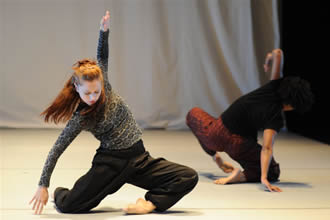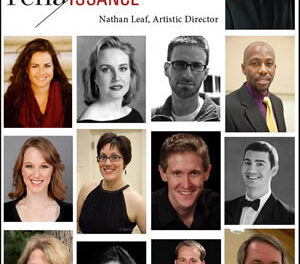Two real rarities joined an old warhorse in guest conductor Alexander Chernushenko’s February 23 Aycock Auditorium concert with the UNCG Symphony Orchestra. Regular conductor Robert Gutter introduced his guest as the founder, in 1991, of the St. Petersburg Capella Orchestra, named for the city’s famous hall. He said that, being used to longer rehearsal time in Russia, his guest had been worried about having only six hours with the student ensemble, not to mention his limited English. Rich toned strings and burnished brass along with an economic and elegant beat belied such reservations.
The centerpiece of Chernushenko’s program was the American premiere of Georgy Sviridov’s The Snowstorm, Musical Illustrations after Pushkin. According to Jaemi Loeb’s excellent program notes, the composer’s “music is often featured in the background of television, film, and Cultural events in Russia and used as an icon of Russian culture in media all over the world.” Composed originally as “a film score for a 1964 movie based on a Pushkin novel of the same title, Snowstorm is a stunning example of Soviet realism with long, lyrical lines based on Russian folk themes and dark, rich timbres.” The nine sections were strongly contrasted. A lovely waltz that featured violins in their highest registers and contrasted greatly with the brass and percussion that dominated a March that would have done Sousa proud. Pizzicato strings in “Spring and Autumn” cushioned extended solos by flutist Laura Meyers, Concertmaster Frédéric St. Pierre, and an unidentified English horn player. Almost every section featured challenging solos for the able concertmaster. “Romance” was memorable, with a trio episode for the concertmaster and cellist Deborah Shields against a repeated figure played by pianist Juan Pablo Andrade. “A Wedding” opened “pp” with divided violin parts and delicate trombones leading to intense, rich strings and burnished brass mimicking chant.
In nearly three decades, we may have heard the program opener, Tchaikovsky’s fantasy, “The Tempest,” Op. 18, once. Loeb’s program notes describe it as “standing as a towering achievement of orchestration and tone painting… which follows the events, characters, [and] moods of the fantastic and exotic Shakespeare play.” With only a few spots of tentative playing or premature entrances, Chernushenko had the string sections in close ensemble, portraying the build-up of waves before the raging storm at sea. Between the beginning and the ending, with images of the ocean, came depictions of tender stirrings of love between Miranda and Ferdinand, the malevolent Caliban, and the fleet Ariel. This work and the Sviridov were both built up by “layering: adding levels of color, rather than by… linear melodic development typical of the Austro-German… tradition.”
A fine and impassioned reading of the old warhorse, “Pictures at an Exhibition” by Modest Mussorgsky, in Ravel’s orchestration, ended the concert. Far more than is normally the case, the timbres of strings and brass were unusually rich and burnished, and nine double basses gave it a solid floor. Brent Davis’ alto saxophone was superbly characterized, and as was the lumbering oxcart, brought to life by the baritone tuba of Sam Nettleton. The unidentified contrabassoonist deserves abundant praise too. Alas what sounded like an idling motorcycle or construction equipment outside the backstage area made concentration difficult during approximately half of the performance.
Alexander Chernushenko has made several recordings, including Bloch’s “Concerto Symphonique” on Chandos and the first violin concertos of Arensky and Shostakovich on the Icone label. He is the son of Vladislav Chernushenko, whose recordings of Rachmaninov’s Vespers and Liturgy of St. John Chrysostom are classics of long standing.












